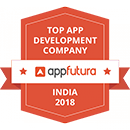
In recent days, mobile apps have been one of the headline developments that has overtaken the entire mobile technology sector by a storm. With the penetration of the Internet and cheap mobile phones, the mobile app market has witnessed a huge upsurge. But, how does an app goes from a concept phase to a final entity, ready to be deployed in the market?
In this post, we will be looking at 8 chronological steps that get an app from the initial concept to the post-launch operations and how a mobile application development company that provides mobile app development services can help you in this journey. Let’s begin!
Conceptualize, Market Research and Development Tech-Stack
There may be a few ideas in your mind regarding your new business app. But first, you need to research thoroughly and get a glimpse of the target audience. You need to understand the competition prevailing in the market and ponder whether your project can be transformed into a business. Below are the points that you need to cover at the initiation stage:
- How much investment is required?
- Who is your business’s target audience?
- Does the proposed app solve any underlying problems?
- What technology needs to be implemented for your app?
- Is there a market requirement for your app?
- What sets your app apart from the competition?
Once their questions are answered, you will get a brief idea regarding the viability of your app and help you in catering to your audience base effectively. This step also helps in assessing any risks and eliminating them in the primary stage itself. A mobile application development company providing mobile app development services can help you in assessing all of these points and helps you in getting your project started from the ground up.
Project Execution
Once the requirement analysis is completed, you need to layout project-specific guidelines that need to be followed for the rest of the projects. Sending out queries to your target audience and taking their feedback can also help to a great extent.
You can also deploy case diagrams that depict the user interaction between the various elements of the application’s UI and helps you in determining the functionality of the project. This step also enables you to absorb the technical specifications and complexity of your project.
Technical Specifications of the Project
It is crucial to understand the technical viability of the app. The deployed back-end system must support the functionality of your app and must make sure that the app will be technically feasible. The guidelines for different operating systems are diverse and understanding the technical viability will save time in designing your app’s prototype. A mobile application development company providing mobile app development services can help you in sorting out the technical specifications of the project seamlessly.
App Designing
Perhaps, one of the most crucial aspects of the mobile app development lifecycle. Your app’s idea is developed as a design and the UI/UX aspects are implemented. In this stage, the UI elements and the user experience for the app are thought out and implemented. The initial app designing begins by developing wireframes and the intricacies of the app’s UI design are carried out.
Apps developed for different operating systems have varying design guidelines. The iOS, Android, and Windows operating environments have their specific set of design guidelines and the apps are required to follow those guidelines. As is witnesses, people sometimes misconstrue the difference between UI and UX.
If an app is attractive but provides poor usability to users, it’s an example of good UX, but poor UI. Similarly, if an app is an eyesore, but it’s user-friendly and easy to use, it’s an example of a good UI, but poor UX. A professional mobile application development company can help you nail the design aspect of your application and design the perfect app that suits your business requirements.
App Development
Once all the app design guidelines are set and the wireframing is finalized, we can now begin with the app development process. In this step, we also choose the language for app development. There are primarily 5 languages that are used by a mobile app development service provider:
- Swift (Primarily used for iOS devices, developed by Apple)
- Python (Primarily used for web-app development)
- Java (Primarily used for developing Android apps)
- PHP (Server-side scripting language used to develop dynamic web applications)
- C++ (A procedural development language having object-oriented programming features)
App Testing and Debugging
Once your app’s prototype is ready, you have to run tests for finding bugs and errors in the program. A mobile application development company that provides custom mobile app development services can provide advanced app debugging and testing services that can help you in developing a bug-free application.
The testing can be done in two ways, user-acceptance testing and beta testing. User acceptance testing involves crowd-testing the app with your target audience and beta testing an app involves sending out the app to a small group of beta testers that can identify bugs in your app.
Final App Launch
Once your app is debugging, you can go ahead with the final launch. There are two steps through which you can deploy your app in the market.
- On a dedicated web-server: You can deploy your app on a dedicated web-server that handles data to and from your app. You must choose the web service provider that can handle the traffic and guarantees 99%+ uptime. Some of the popular web service providers are Amazon’s AWS, Azure, RackSpace, etc.
- Submit your app to the app portals: Once your app’s technical backend is ready, you can submit your app to the App Store and the Play Store. Apple checks all the submitted apps manually hence it takes a few more days to get your app live on the App Store and the other hand, Play Store published your app on the same day.
Post Launch Monitoring
The app development lifecycle does not terminate with the app launch. Rather, once your app gets downloaded by a sizeable number of users, you get access to advanced analytics that can provide insights related to app crashes and help you in developing a seamless experience for your users.
The analytics obtained from your app can provide you with user-specific information such as user location, time spent by the user on the app, app crash information, user-specific information, and large-scale usage patterns. This data can be used to implement improvements and develop a seamless app for your users.









